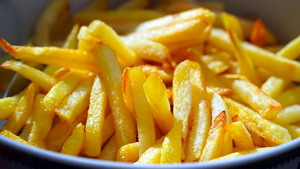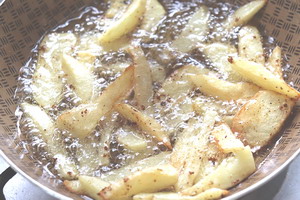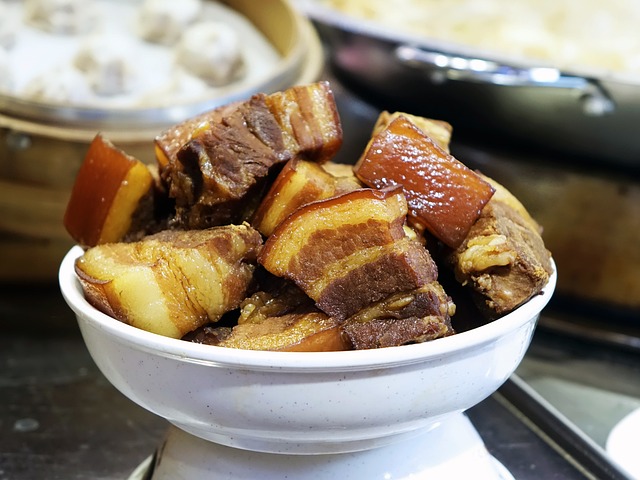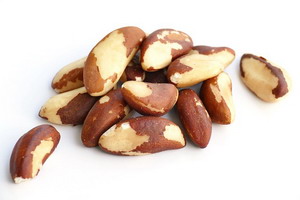Fat is a subject that everyone thinks they already kn ow all about, but which in reality is a huge area of information most folks don’t know anything about. Like so many things in this world, the modern world of fat has been split into two camps – the saturated fat camp and the unsaturated fat camp. The lines in the sand for these two groups are similar to the last newsletter with the keto low-carb and high-carb low-fat diets. People seem to love breaking complex issues down into two simplistic views and then choosing a side to support and believe in. But just as we saw with the weight loss diets, neither side is right or wrong, just different approaches to achieve the same goal.
ow all about, but which in reality is a huge area of information most folks don’t know anything about. Like so many things in this world, the modern world of fat has been split into two camps – the saturated fat camp and the unsaturated fat camp. The lines in the sand for these two groups are similar to the last newsletter with the keto low-carb and high-carb low-fat diets. People seem to love breaking complex issues down into two simplistic views and then choosing a side to support and believe in. But just as we saw with the weight loss diets, neither side is right or wrong, just different approaches to achieve the same goal.
Okay, so what are the primary goals we are seeking when we consume fats? The three main goals are storing ene rgy, building membranes, and controlling the hormone/ inflammation/anti-inflammation cycles. The stored energy part most of us are all too familiar with. That is the extra pounds of fat we carry around for a rainy day (or several months in many of our cases.) That fat is the most concentrated and easily transported source of energy for our body in times of famine. A healthy normal-weight person can survive several months just on their body fat if they need to. Back in hunter-gatherer days that need was every winter.
rgy, building membranes, and controlling the hormone/ inflammation/anti-inflammation cycles. The stored energy part most of us are all too familiar with. That is the extra pounds of fat we carry around for a rainy day (or several months in many of our cases.) That fat is the most concentrated and easily transported source of energy for our body in times of famine. A healthy normal-weight person can survive several months just on their body fat if they need to. Back in hunter-gatherer days that need was every winter.
Let’s dig deeper into the story of fats. First of all, th ere are about 100 different types of fatty acids and 29 that are common in human physiology – 29, not 2. Most people think there are just saturated and polyunsaturated fatty acids. Nope. There are lots of different fatty acids and each one of them does different things in the body. Fats are classified by how flexible they are and how long their chain of carbon atoms is. What makes a fat flexible is something called a double bond. The chemistry is not important. Just know that the more double bonds there are, the more ways the fat chain can bend. Flexible fats are consequently liquid at room temperature while saturated fats with no double bonds tend to be hard unless their chain is very short. Any fats formed in the body are created in 2 carbon chunks, so they always have an even number of carbons. Certain essential fats that have an odd number of carbons, like the C15 in the office, are only created by plants. Likewise, many of the fats with double bonds are not formed in the human body but come from sources like fish and krill. Double bonds also make these fats susceptible to peroxidation (rancidity) and therefore fragile.
ere are about 100 different types of fatty acids and 29 that are common in human physiology – 29, not 2. Most people think there are just saturated and polyunsaturated fatty acids. Nope. There are lots of different fatty acids and each one of them does different things in the body. Fats are classified by how flexible they are and how long their chain of carbon atoms is. What makes a fat flexible is something called a double bond. The chemistry is not important. Just know that the more double bonds there are, the more ways the fat chain can bend. Flexible fats are consequently liquid at room temperature while saturated fats with no double bonds tend to be hard unless their chain is very short. Any fats formed in the body are created in 2 carbon chunks, so they always have an even number of carbons. Certain essential fats that have an odd number of carbons, like the C15 in the office, are only created by plants. Likewise, many of the fats with double bonds are not formed in the human body but come from sources like fish and krill. Double bonds also make these fats susceptible to peroxidation (rancidity) and therefore fragile.
I prefer to look at fats in terms of what they do. For instance, the membrane around every cell (its wall) is made from two layers of fats attached to phosphorus. When the inner layers of fat are saturated, the membrane becomes very stiff. When the inner lipid (fat) layer is unsaturated, the membrane becomes very flexible (and fragile). A healthy membrane has just the right mix of stiff and flexible fats to optimize the function of the particular cell type. For instance, muscles need very flexible cells while tendons and ligaments need stiff cells. The specific type of fat gives the cell membrane different capacities. For instance, nerve cells need a specific very long, and flexible fat (nervonic acid) to protect the electrical signal part just like the soft plastic around wires in our walls and electronics. Every cell type in our body needs very specific fatty acid types to function properly. Another example we hear about a lot these days is the importance of DHA (docosahexaenoic acid) in our diet as it is what our brain cells are mostly made from. This is because DHA is a very flexible fat with 5 bending points in it. This is necessary because the brain cells are constantly remodeling themselves, changing shapes, and making new connections. Unfortunately, this flexibility also makes brain cells very fragile and easily damaged.
two layers of fats attached to phosphorus. When the inner layers of fat are saturated, the membrane becomes very stiff. When the inner lipid (fat) layer is unsaturated, the membrane becomes very flexible (and fragile). A healthy membrane has just the right mix of stiff and flexible fats to optimize the function of the particular cell type. For instance, muscles need very flexible cells while tendons and ligaments need stiff cells. The specific type of fat gives the cell membrane different capacities. For instance, nerve cells need a specific very long, and flexible fat (nervonic acid) to protect the electrical signal part just like the soft plastic around wires in our walls and electronics. Every cell type in our body needs very specific fatty acid types to function properly. Another example we hear about a lot these days is the importance of DHA (docosahexaenoic acid) in our diet as it is what our brain cells are mostly made from. This is because DHA is a very flexible fat with 5 bending points in it. This is necessary because the brain cells are constantly remodeling themselves, changing shapes, and making new connections. Unfortunately, this flexibility also makes brain cells very fragile and easily damaged.
Just on a structural level, you can begin to appreciate how important a properly balanced diet becomes. Avoiding one type of fat by being on a restrictive diet will have very serious consequences on your health by shortening the required building materials for various specific cell types. This nutritional balance is a whole lot more complicated than saturated versus unsaturated fats. We need all the different fats from food sources that provide the full range of these needed fats. That is why I have never seen a person who has spent a length of time on a healthy low-fat diet. They may think they are healthy because they have their body weight down to slim and trim, but their hormones are a mess, their organs don’t work, and their brains are slowly failing.
how important a properly balanced diet becomes. Avoiding one type of fat by being on a restrictive diet will have very serious consequences on your health by shortening the required building materials for various specific cell types. This nutritional balance is a whole lot more complicated than saturated versus unsaturated fats. We need all the different fats from food sources that provide the full range of these needed fats. That is why I have never seen a person who has spent a length of time on a healthy low-fat diet. They may think they are healthy because they have their body weight down to slim and trim, but their hormones are a mess, their organs don’t work, and their brains are slowly failing.
Continuing on the theme of balance, let’s turn to the f unction of inflammation. You need inflammation in the right place, at the right time, and in the right amount. Without it, you can not heal from injury or disease. Inflammation is the first stage of the healing process. Too much inflammation and we begin to destroy healthy tissue. Fats control this process. Inflammation is supported by a group of fats called omega-6 fats while anti-inflammation is controlled by omega-3 fats. We need both in balance. As you might guess, that means we need equal amounts of each from the diet. But what do we get in the average American diet? We get about 20 times as much of the inflammatory omega 6 oils as we get the omega 3 anti-inflammatory oils. The omega-6 oils are your seed oils – sunflower, safflower, soy, corn, cottonseed, and so on. The reason is simple, taste. How often do you fry your chicken or deep fry your doughnuts and french fries in cod liver oil? You don’t. Yes, we try to eat a chunk of salmon every week to get some omega-3 oil in our diet, but are we going to fry our pancakes and eggs in salmon oil? I don’t think so. Omega-3 oils all taste fishy. Who wants fishy pancakes? The net result is we drown ourselves in oils that promote inflammation and barely consume any anti-inflammatory oils. The two most needed essential fatty acids are ALA (alpha-linolenic acid) and LA (linoleic acid). How much do you need? For ALA that need is 2 grams/day (about ½ tsp.) and for LA that need is 10 to 17 grams per day (3 to 4 tsp per day).
unction of inflammation. You need inflammation in the right place, at the right time, and in the right amount. Without it, you can not heal from injury or disease. Inflammation is the first stage of the healing process. Too much inflammation and we begin to destroy healthy tissue. Fats control this process. Inflammation is supported by a group of fats called omega-6 fats while anti-inflammation is controlled by omega-3 fats. We need both in balance. As you might guess, that means we need equal amounts of each from the diet. But what do we get in the average American diet? We get about 20 times as much of the inflammatory omega 6 oils as we get the omega 3 anti-inflammatory oils. The omega-6 oils are your seed oils – sunflower, safflower, soy, corn, cottonseed, and so on. The reason is simple, taste. How often do you fry your chicken or deep fry your doughnuts and french fries in cod liver oil? You don’t. Yes, we try to eat a chunk of salmon every week to get some omega-3 oil in our diet, but are we going to fry our pancakes and eggs in salmon oil? I don’t think so. Omega-3 oils all taste fishy. Who wants fishy pancakes? The net result is we drown ourselves in oils that promote inflammation and barely consume any anti-inflammatory oils. The two most needed essential fatty acids are ALA (alpha-linolenic acid) and LA (linoleic acid). How much do you need? For ALA that need is 2 grams/day (about ½ tsp.) and for LA that need is 10 to 17 grams per day (3 to 4 tsp per day).
Now here is a weird thing. Even in our deep-fried grease-drenched American diet, we can still end up with a  fatty acid deficiency. How is that? Well, I remember 50 years ago (yeah that sounds strange to say) I would buy cold pressed sunflower oil in a tiny dark brown bottle from the refrigerated section of the store. Why? Because essential oil is super fragile and spoils very easily. Even light spoils it. The word we used back then was that the oil went rancid. Nobody seems to use that word anymore. Now we say the oil has peroxidized. Whatever. The point is that the instant it hits the air it starts to go bad. You can’t heat it at all or it goes bad. The bottles we bought had to be tossed out if they had been opened more than a month. Knowing this, do you think the seed oil you buy in the big clear plastic bottles on the shelf of the store is any good? How about after you use them in cooking? They are toast. Once the oil has been peroxidized, the only thing your body can use that oil for is to put fat on your body. It used to be that we knew when an oil had gone bad because it smelled really bad. These days the oil has deodorizers in it, so we can’t smell that it has gone bad.
fatty acid deficiency. How is that? Well, I remember 50 years ago (yeah that sounds strange to say) I would buy cold pressed sunflower oil in a tiny dark brown bottle from the refrigerated section of the store. Why? Because essential oil is super fragile and spoils very easily. Even light spoils it. The word we used back then was that the oil went rancid. Nobody seems to use that word anymore. Now we say the oil has peroxidized. Whatever. The point is that the instant it hits the air it starts to go bad. You can’t heat it at all or it goes bad. The bottles we bought had to be tossed out if they had been opened more than a month. Knowing this, do you think the seed oil you buy in the big clear plastic bottles on the shelf of the store is any good? How about after you use them in cooking? They are toast. Once the oil has been peroxidized, the only thing your body can use that oil for is to put fat on your body. It used to be that we knew when an oil had gone bad because it smelled really bad. These days the oil has deodorizers in it, so we can’t smell that it has gone bad.
There is mounting evidence that the huge excess of o mega-6 oil we are consuming is significantly contributing to our degenerative disease crisis. I question if the impact would be so bad if the oil we were eating was not spoiled. Evidence points to increased cancer rates because of the big increase in seed oil consumption and an increase in all causes of mortality. Saturated fats have the advantage of not getting peroxidized (spoiled). Their structure does not allow for peroxidation. The demonization of saturated fats that took place from 1950 to even today is being dismantled as the biased cherry-picked studies and blocked unpublished studies showing there is no problem with saturated fats. Nevertheless, there is still some valid evidence that seems to suggest that saturated fats in excess can still be a problem – nothing as bad as the impact of excess refined carbohydrates on the body. But the word is getting out that we need to eat real food and not the processed crap that fills our grocery stores today.
mega-6 oil we are consuming is significantly contributing to our degenerative disease crisis. I question if the impact would be so bad if the oil we were eating was not spoiled. Evidence points to increased cancer rates because of the big increase in seed oil consumption and an increase in all causes of mortality. Saturated fats have the advantage of not getting peroxidized (spoiled). Their structure does not allow for peroxidation. The demonization of saturated fats that took place from 1950 to even today is being dismantled as the biased cherry-picked studies and blocked unpublished studies showing there is no problem with saturated fats. Nevertheless, there is still some valid evidence that seems to suggest that saturated fats in excess can still be a problem – nothing as bad as the impact of excess refined carbohydrates on the body. But the word is getting out that we need to eat real food and not the processed crap that fills our grocery stores today.
When I started this article, I intended to go through al l 29 fatty acids to show you their unique properties and importance to the body. But as I was researching all that data, even I found that the nerd level was too high. There was just too much information that no one was ever going to remember. So the big message today is that you need all sorts of fatty acids to be healthy. You can not cut out significant sources or types of fat without paying a price. Variety is the key. You don’t need to eat a lot of fat if the fat you are getting is from fresh food, and not bottled on a shelf. Only cook with monosaturated (olive or avocado oils) or saturated fats (coconut, butter, or meat fats). They can handle the heat without going rancid. These days some of the really delicate oils may need to be taken in supplement form like krill oil capsules and some of the rare fatty acids like C15 may need to be supplemented.
l 29 fatty acids to show you their unique properties and importance to the body. But as I was researching all that data, even I found that the nerd level was too high. There was just too much information that no one was ever going to remember. So the big message today is that you need all sorts of fatty acids to be healthy. You can not cut out significant sources or types of fat without paying a price. Variety is the key. You don’t need to eat a lot of fat if the fat you are getting is from fresh food, and not bottled on a shelf. Only cook with monosaturated (olive or avocado oils) or saturated fats (coconut, butter, or meat fats). They can handle the heat without going rancid. These days some of the really delicate oils may need to be taken in supplement form like krill oil capsules and some of the rare fatty acids like C15 may need to be supplemented.
Bottom line – eat a wide variety of real foods, not things that have bar codes on them.
David
Hey, that amazing C15 supplement that is for maki ng your cell membranes stronger/less fragile is now available in the office! Pick yours up now! Learn more about it in this video!
ng your cell membranes stronger/less fragile is now available in the office! Pick yours up now! Learn more about it in this video!
https://www.youtube.com/watch?v=fKt3S25Q-as
Ellen
I came home the other day and found Ellen and Luke dancing in the kitchen. Sometimes exercise does not have to be  quite so much work. Getting those legs to move sideways is much more fun if you believe you are dancing with the stars.
quite so much work. Getting those legs to move sideways is much more fun if you believe you are dancing with the stars.
This is not particularly new information, but this study was super deep and involved looking at over 3000 proteins and metabolites in folks blood. The study compared healthy eaters, average eaters, and folks that preferred more carbs and sugary foods.
___________________________
“Democracy is the art and science of running the circus from the monkey cage.”
~H. L. Mencken
_____________________________________
arm of the study in which participants ate 2 Brazil nuts each day showed improvements in leaky gut and intestinal inflammation. The premise is that the selenium in the nuts improves the gut.
____________________________
“It is not materialism that is the chief curse of the world, as pastors teach, but idealism. Men get into trouble by taking their visions and hallucinations too seriously.”
~H. L. Mencken
________________________________________
Weighted blankets improve sleep
Weighted blankets provide your body with the feelin g of being hugged which induces a feeling of ease. Folks need less sleep medication and get better quality sleep
g of being hugged which induces a feeling of ease. Folks need less sleep medication and get better quality sleep
________________________
“It is inaccurate to say that I hate everything. I am strongly in favor of common sense, common honesty, and common decency. This makes me forever ineligible for public office.”
~H. L. Mencken


